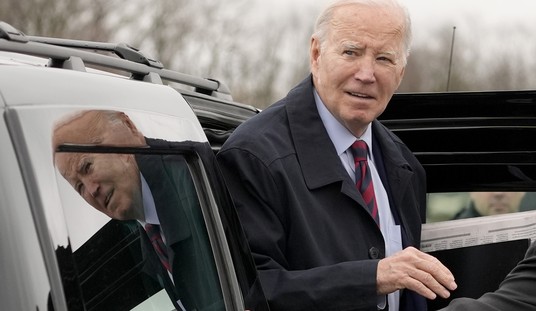Dr. Peter Pry is the Executive Director of the Task Force on National Homeland Security, Chief of Staff of the Congressional EMP (Electric Magnetic Pulse) Commission, and is considered one of the country’s most knowledgeable experts on nuclear weapons technology. He is the undisputed preeminent authority on the existential threat presented by the proliferation of EMP weapons and gained national prominence in various testimonies before Congress, where he has categorically stated that the detonation of a single EMP weapon by a rogue state such as North Korea or Iran could destroy the US.
In September of 2014, Peter and I collaborated on a Blaze Magazine article, Blackout, where he outlined how a single EMP nuclear weapon, detonated at apogee (between 50 to 200 miles above the US), would destroy the country’s entire electrical grid. Airplanes would fall out of the sky, our cars would not start, banking, nearly all non-barter related commerce would cease, and nine out of ten Americans would eventually die due to total societal collapse.
I recently caught up with Peter to ask him what he thought about the new North Korean nuclear missile crisis.
Kelley: If Trump’s negotiations with President Xi Jinping and the Chinese government fail to bring about regime change in North Korea, can the US successfully take out their nuclear sites? And do we know where they all are?
Pry: We don’t know where they all are. We do, however, have the ability, I believe, to do a successful preemptive strike. Which doesn’t mean we get a hundred percent of everything. But we would be able to effectively disarm them, certainly of their ICBM’s (intercontinental ballistic missiles). They don’t have that many of them, maybe only a dozen. So, we have this window of opportunity when it comes to their ICBM’s.
Kelley: How should the strike be conducted?
Pry: It should include everything in our arsenal, our own EMP, cyber, conventional forces (ours and Korea’s). We can get most of their stuff in a first strike but there’s no guarantee we get all of it, even all of those small number of ICBM’s. But if any of those survive, our missile defense forces should be able to handle them.
Recommended
Kelley: But what about all those vast numbers of short-range missiles we read are pointed at South Korea? Can all of those be taken out in a surprise attack?
Pry: It’s problematic when you’re talking about medium-range missiles, the no-dong’s. Most are not nuclear-armed. But I think we are grossly underestimating the number of nuclear warheads they have. They could have 100 nuclear weapons, most of them mounted on the no-dong’s. So there is no doubt, our allies would be more at risk from some of these surviving missiles. They hide them in tunnels and under bridges. But what are we going to do? Wait until they have enough (nuclear weaponized missiles) to make preemption impossible?
Kelley: Is North Korea reaching critical mass in terms of its nuclear weapons capability?
Pry: Not yet. Through our offensive and defensive systems we still have a reasonable chance to get all of their weapons and systems. But some of the short range missiles, the no-dongs, could get through and hit some cities.
Kelley: Cities where?
Pry: South Korea or US military bases in Japan. They could even get off an EMP attack which would be utterly bad news. We now have a rapidly vanishing window of opportunity. If they were to hit our allies with an EMP, we could help them recover. But if they deploy many more nuclear-armed short and long-range missiles, the problem becomes unmanageable. The key is to stop them before they get more ICBM’s, when they can hold the US mainland at risk. No American president is going to take out North Korea, at the risk of Los Angeles or Chicago, for the security purposes of Japan and South Korea.
Kelley: But haven’t we’ve lived for some time with other bad actors getting nuclear weapons such as Russia?
Pry: It’s not as if (Kim Jung UN of)North Korea is an acceptable rational actor. Sooner or later he will use those nuclear missiles. It’s better to get it over now while we can win. In fact, it’s still possible we could do a preemptive strike so that he won’t be able to get a glove on us. But I can’t guarantee we can now get all the medium range missiles because there are so many of them.
Kelley: In my view, most Americans don’t believe North Korea has anything like 100 nuclear-armed short range missiles.
Pry: The no-dongs were the first thing they armed. They can carry a (nuclear) one-ton payload. The no-dongs are nuclear armed! The CIA has attested to this since ’08. But the mainstream view is that they have only about 20 nuclear weapons. But I think this is a total fantasy. That assumes we have perfect knowledge of their program when we know they have a vast nuclear development complexes underground.
Kelley: I’ve heard some national defense experts estimate that, if the US were to attempt a preemptive strike on the North, as many as 250 thousand South Koreans would die. It sounds to me that you don’t agree.
Pry: I won’t issue an estimate. I agree this thing could escalate into another Korean War. But that’s the risk we have to run, because if we allow the North to fully nuclearize, we could be facing hundreds of millions of Americans dead in an EMP attack; in other words, an existential threat to the US.
(Part 2 will be published Sunday, May 7.)






















Join the conversation as a VIP Member